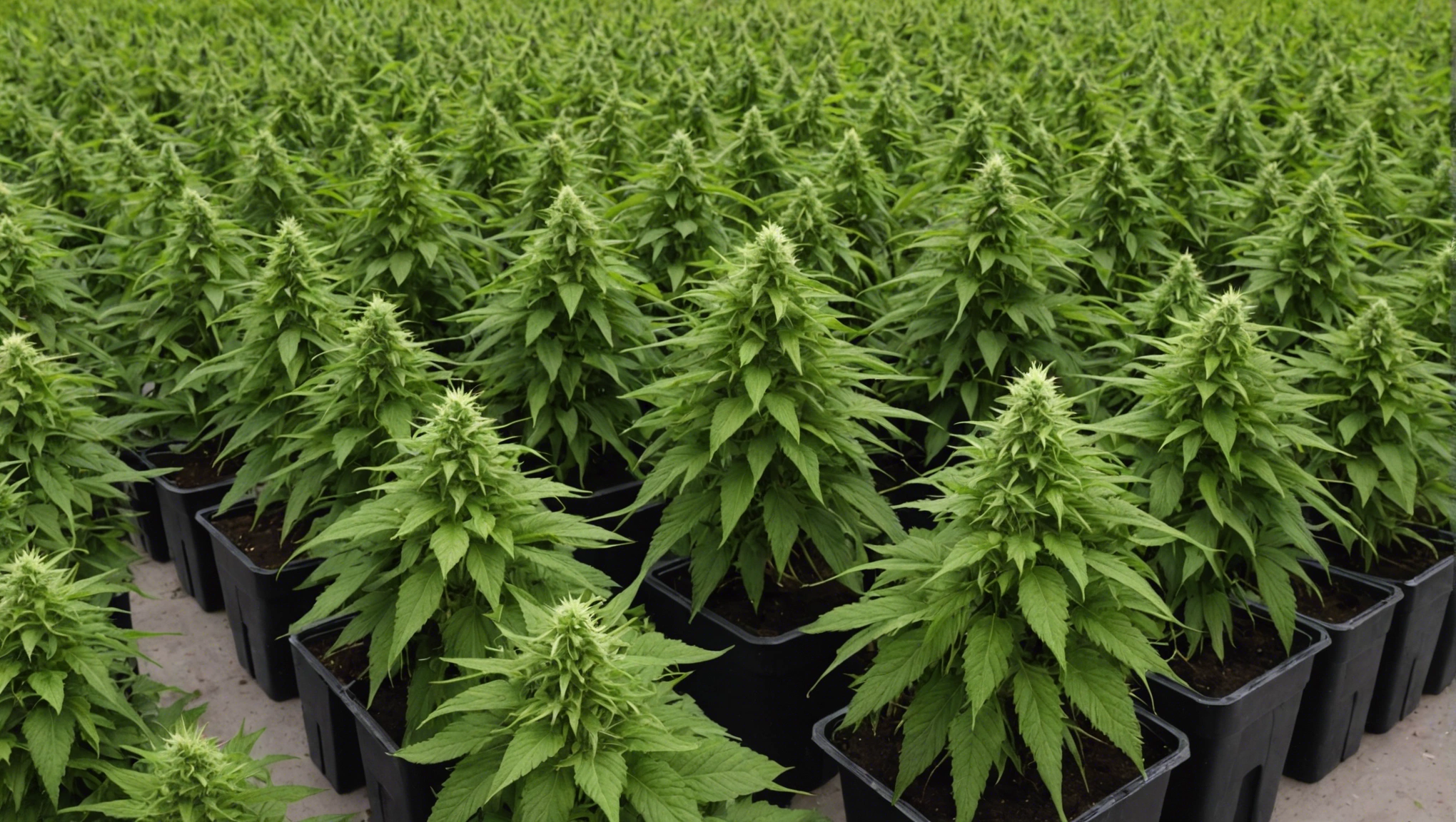Tips for Cultivating Autoflower Seeds

Embarking on the journey of cultivating autoflower seeds can be both exciting and rewarding. To ensure a successful harvest, it is crucial to arm yourself with the right knowledge and techniques. In this guide, we will explore 10 essential tips that will help you navigate the intricacies of growing autoflower seeds with confidence. From understanding the unique characteristics of autoflowering plants to optimizing their growth environment, each tip is designed to empower you on your cultivation journey. Whether you are a novice grower or have some experience under your belt, these tips will serve as valuable tools to enhance your cultivation skills and maximize the potential of your autoflower seeds. Get ready to dive into the world of autoflower cultivation and unlock the secrets to a bountiful harvest!.
Section: Tips for Successful Cultivation
When it comes to successful cultivation, there are several key tips to keep in mind to ensure a bountiful harvest. Here are some essential points to discuss:.
-
Light Schedule and Growing Cycle: Understanding the light requirements of your plants and maintaining a consistent growing cycle is crucial for healthy growth. Different plants have varying light needs, so it’s important to tailor your light schedule accordingly. Consider factors like natural sunlight, artificial lighting, and the duration of light exposure to optimize plant growth.
-
Continuous Harvesting Strategy: Implementing a continuous harvesting strategy can help maximize your yield and ensure a fresh supply of produce. By staggering your planting times and harvest schedules, you can enjoy a steady stream of crops throughout the growing season. This approach also prevents overwhelming harvests and minimizes waste.
-
Importance of Soil Quality: Good soil quality is the foundation of a successful garden. Make sure to regularly test and amend your soil to provide essential nutrients for your plants. Consider using organic matter, compost, or specialized fertilizers to enrich the soil and promote healthy plant growth. Additionally, maintaining proper soil pH levels is crucial for nutrient uptake and overall plant health.
-
Different Germination Methods: Experimenting with various germination methods can help you find the most effective technique for your specific plants. From seed starting indoors to direct sowing outdoors, explore different approaches to germination to determine what works best for your garden. Factors like seed depth, moisture levels, and temperature can impact germination success, so be attentive to these variables.
-
Maintaining Optimal Growing Conditions: Consistent monitoring of factors like temperature, humidity, and airflow is essential to create optimal growing conditions for your plants. Use tools like thermometers, hygrometers, and fans to regulate environmental variables and provide a comfortable setting for plant growth. Proper ventilation and air circulation can prevent issues like mold, mildew, and pest infestations.
By following these tips and staying attentive to the needs of your plants, you can set yourself up for a thriving and productive cultivation experience. Remember, each plant species may have specific requirements, so adapt these general tips to suit the unique characteristics of your garden and enjoy the rewards of successful cultivation.
Expert Advice on Germination
Germination is a critical process in the life cycle of plants, playing a pivotal role in determining the success of plant growth. Enzo Schillaci and Jorge Cervantes, two esteemed experts in the field, have collaborated to provide a comprehensive germination guide that serves as a valuable resource for both novice and experienced gardeners.
Seed germination is a complex yet fascinating phenomenon influenced by various factors such as temperature, moisture, light, and soil quality. Understanding these factors is essential for creating optimal conditions that promote successful germination. Schillaci and Cervantes emphasize the significance of selecting high-quality seeds, as the genetic potential of a plant is inherent in its seed.
Delving into the scientific principles of germination, it becomes evident that this process involves intricate biochemical and physiological changes within the seed. The activation of enzymes, respiration, and cell division are among the fundamental processes that occur during germination, culminating in the emergence of a seedling.
Moreover, the germination process is not only essential for plant propagation but also serves as a means of ensuring genetic diversity and adaptation within plant populations. By understanding the mechanisms behind germination, gardeners can make informed decisions regarding seed selection, planting techniques, and environmental conditions.
In addition to the environmental factors influencing germination, the role of seed dormancy and germination inhibitors is crucial to consider. Seed dormancy is a built-in mechanism that prevents seeds from germinating under unfavorable conditions, ensuring that germination occurs when the environment is conducive to seedling survival. Understanding how to break seed dormancy and mitigate the effects of germination inhibitors can significantly improve germination rates and overall plant health.
Furthermore, the timing of seed sowing and the use of pre-germination treatments, such as scarification and stratification, can enhance germination success. These techniques help to overcome seed coat impermeability and mimic natural conditions that trigger germination in the wild. By incorporating these practices into your gardening routine, you can boost the germination potential of your seeds and accelerate the establishment of healthy seedlings.
The collaborative efforts of Enzo Schillaci and Jorge Cervantes have provided valuable insights into the art and science of germination. Their expertise, combined with a deep understanding of plant biology, offers a holistic approach to achieving successful germination outcomes. Whether you are a beginner or a seasoned gardener, embracing the principles outlined in this germination guide can elevate your gardening experience and foster a deeper appreciation for the miraculous process of plant growth.
Section: Comparing Autoflower Seeds with Photoperiod Seeds
When it comes to growing cannabis, cultivators often face the decision of choosing between autoflower seeds and photoperiod seeds. Each type offers unique characteristics and advantages that cater to different preferences and growing conditions. In this section, we will delve deeper into the comparison between autoflower seeds and photoperiod seeds, focusing on their germination process, growth patterns, and overall cultivation requirements.
Similarities in Germination Process:
Both autoflower seeds and photoperiod seeds share commonalities in their germination process. They require similar conditions to sprout successfully, such as adequate moisture, warmth, and a suitable growing medium. Typically, the germination process involves soaking the seeds until they crack open and then planting them in a medium that provides the necessary nutrients for initial growth. Maintaining a warm and dark environment during germination is crucial for ensuring optimal conditions for seedling development.
Differences in Growth Patterns:
One of the key distinctions between autoflower seeds and photoperiod seeds lies in their growth patterns. Autoflower seeds have a unique trait of transitioning from the vegetative stage to the flowering stage based on age rather than light exposure. This characteristic makes autoflowers well-suited for growers seeking a quicker harvest cycle and simplified light management. On the other hand, photoperiod seeds rely on specific light cycles to trigger flowering, offering cultivators more control over the plant’s growth stages.
Cultivation Requirements:
In terms of cultivation requirements, autoflower seeds are known for their resilience and ability to thrive in various environments. They are generally more forgiving of mistakes and fluctuations in light schedules, making them ideal for novice growers or those with limited space. Conversely, photoperiod seeds demand more precise light management to ensure proper flowering and yield optimization. Understanding these differences in cultivation requirements can help growers select the most suitable seed type based on their experience level and growing setup.
While both autoflower seeds and photoperiod seeds have their distinct advantages, understanding their germination process, growth patterns, and cultivation requirements is essential for successful cannabis cultivation. By considering these factors and tailoring their approach accordingly, cultivators can maximize the potential of their chosen seeds and achieve bountiful harvests of high-quality cannabis.
Conclusion
Successful cultivation of autoflower seeds requires attention to detail, patience, and the right resources. By following the 10 tips outlined in this blog, you can enhance your chances of a bountiful harvest. For a wide variety of high-quality autoflowering and feminized cannabis seeds, including popular strains like Acapulco Gold and White Truffle Ice Cream, visit. JG Seeds . Take advantage of their 10% discount for new customers and free shipping on orders over $60 for 12 packs. Sign up for their newsletter to stay updated on exclusive offers and receive valuable tips for successful cultivation. Elevate your growing experience with JG Seeds today.










